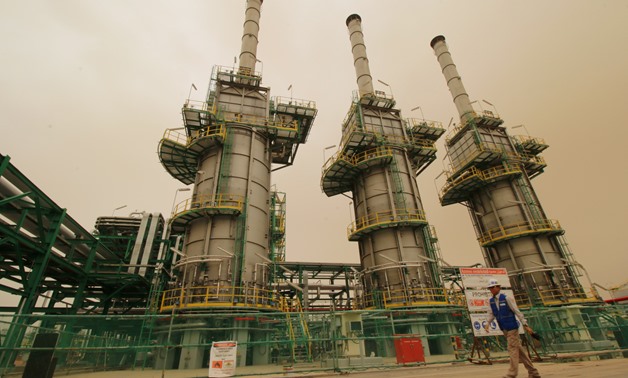
A worker walks at the Zubair oilfield in Basra, Iraq May 9, 2018. REUTERS/Essam al-Sudani
LONDON - 25 September 2018: The oil price shot to its highest in four years on Tuesday, catapulted by upcoming U.S. sanctions on Iranian crude exports and the apparent reluctance of OPEC and Russia to raise output to offset the potential hit to global supply.
Brent crude futures LCOc1 were up 74 cents on the day at $81.94 a barrel at 0844 GMT, having touched a session peak of $82.20, the highest since November 2014.
The oil price is on course for its fifth consecutive quarterly increase, the longest stretch of gains since early 2007, when a six-quarter run led to a record high price of $147.50 a barrel.
U.S. crude futures CLc1 were up 44 cents at $72.52 a barrel, near their highest since mid July.
The United States from Nov. 4 will target Iran’s oil exports with sanctions, and Washington is putting pressure on governments and companies around the world to fall in line and cut their purchases.
“Iran will lose sizeable export volumes, and given OPEC+ reluctance to raise output, the market is ill-equipped to fill the supply gap,” Harry Tchilinguirian, global head of commodity markets strategy at French bank BNP Paribas, told the Reuters Global Oil Forum on Tuesday.
Mohammad Barkindo, secretary general of the Organization of the Petroleum Exporting Countries, said in Madrid on Tuesday it was important that OPEC and its non-OPEC partners including Russia cooperate to not “fall from one crisis to another.”
The International Energy Agency forecasts strong oil demand growth of 1.4 million barrels per day (bpd) this year and 1.5 million bpd in 2019, and said in its most recent report that the market was tightening up. [IEA/M]
U.S. President Donald Trump has demanded that OPEC and Russia increase their supplies to make up for the expected fall in Iranian exports. Iran is the third-largest producer in OPEC.
OPEC and Russia, however, have so far rebuffed such calls.
The so-called “OPEC+” group, which includes the likes of Russia, Oman and Kazakhstan, met at the weekend to discuss a possible increase in crude output, but the upshot of the gathering was that the group was in no rush to do so.
“After the weekend’s meeting the voices of those who foresee $100 a barrel price and compare the current backdrop to the 2007/2008 bull run are getting louder. Undoubtedly the oil market is expected to be tight in coming months and if OPEC’s own numbers are to be believed global oil inventories are to fall in the remainder of the year,” PVM Oil Associates strategist Tamas Varga said.
Richard Robinson, manager of the Ashburton Global Energy Fund, said higher prices were almost certainly on the cards.
“We believe the combination of tight supply, healthy demand, falling global inventories – down from already under-stored levels – and anaemic spare capacity helps support an oil price which could end the year above $90,” he said.

Comments
Leave a Comment